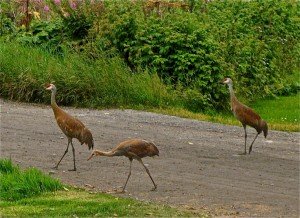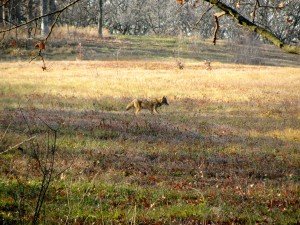Articles about infidelity among humans are always a draw for readers, and yes, including me. But I’m even more eager to read articles or research about monogamy among our animal brethren.
It’s true that genetic research has dispelled some of the monogamous myths about animal bonds. For example, DNA testing of nestlings born to bird pairs who appeared monogamous showed about one-third were sired from other fathers.
But enough hold up to show that some species are not all that different from humans. Why, even the California mouse, a large-eared mouse that lives in central and southern California, shows surprising monogamy, with only one brother-sister pairing mucking up the research findings.
Most birds stick with their mates
Research shows birds are quite monogamous, with more than 90 percent of species staying with one mate for at least a mating season. And despite the fooling around mentioned above, most stay with their chosen mates for the whole breeding season, while others such as mourning doves and some robins keep their bond through several breeding seasons.

And then there’s a number who form life bonds. Studies of black vultures and sandhill cranes show virtually no straying. One study suggested that the frequent copulation in sandhill cranes serves to reinforce long-term pair bonds. One early April my husband and I had the pleasure of witnessing thousands of sandhill cranes landing at the Rowe Sanctuary in Nebraska after feeding on nearby harvested fields. What we didn’t witness was the single cranes, who are either young or have lost a mate, performing elaborate mating dances. Except for what researchers have called a rare “extra-pair copulation event” in 2006, sandhill cranes show remarkable fidelity.
Others birds maintaining lifetime bonds include albatrosses, petrels, swans, geese, eagles, and some owls and parrots.
Some birds will seek new mates when habitat challenge creates stress. Researcher Russ Benford, a behavioral ecologist at Northern Arizona University in Flagstaff Arizona, knew that some normally monogamous birds adjusted to drought conditions by seeking mates in other flocks or helping their parents raise chicks.
Benford was studying the scrub jay, whose primary food source is the nuts from the pinion pine, an important tree in the Southwest that is threatened by drought and wildfires. Known for forming tight life-long pairs, Benford wanted to see if they would stray under stressed conditions. He captured and separated mated pairs and placed them in aviaries with what he called attractive members of the opposite sex. The result: he couldn’t get them to cheat on each other.
Unexpected Monogamy among Coyotes
Monogamy is less common among rodents and mammals but there are surprising examples. One is the prairie vole, which is found in the central states of the U.S.. Once prairie voles pair up, they share parenting duties, and groom and cuddle one another. In one study, committed males were tempted with unfamiliar, virgin females. Fewer than 10% succumbed. Even when their mate died, very few left their area to find another mate.

Research shows only about 5% of mammals are monogamous. However, recent research about urban coyotes showed nearly total monogamy.
Scientists with Ohio State University who genetically sampled 236 coyotes in the Chicago area over a six-year period (see Monogamy among Urban Coyotes) found no evidence of polygamy – of the animals having more than one mate – nor of one mate ever leaving another while the other was still alive. Lead researcher Stan Gehrt was surprised at what he called the incredible loyalty to their partners. “The male spends just as much time helping to raise those pups as the female does,” he said. Some pairs have stayed together for 10 years.
Camilla Fox, director of Project Coyote, said the research reconfirmed that “coyotes have very strong social bonds and are dedicated and devoted mates for life. This should give us pause when we think about the mass persecution of coyotes — on average, one coyote is killed a minute — and what this kind of indiscriminate killing does to coyote social dynamics.”
Decades of research have shown that indiscriminate killing of coyotes can be counterproductive because it leads to population increases through a variety of biological mechanisms. Research shows that nonselective killing can also disrupt group dynamics because it severs pair bonds and forces formerly behavior sterile beta females in the pack into estrus – thus increasing local populations.
“The take home message is that we need to leave coyotes alone as they self regulate and do much better without human interference,” said Fox.
Wanted to share this note I got about the post (which also appeared in our local paper):
I read your interesting article on animal monogamy today 12/12/12 in the Redlands Facts.
A former docent of The Living Desert in Palm Springs told us that roadrunners also
mate for life.
We have a mated pair that appears twice a year. We think it’s the same pair,
because they have gotten more and more comfortable with the humans and the
animals on the farm here in San Timoteo Canyon. They seem to like
looking at themselves in reflecting things, too, like our car rear view mirrors and
big windows. They often bring over whatever they have caught–a lizard, etc.–
for us to see, much like a cat would. We now clap and say “What a good
Hunter!” which will get from the male, an expanding of his head plume.
Love your stuff.